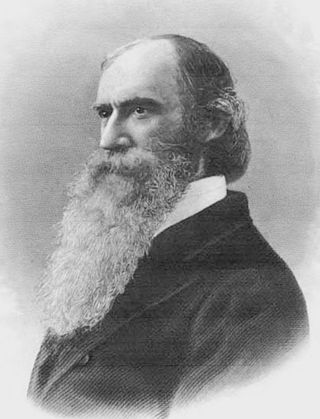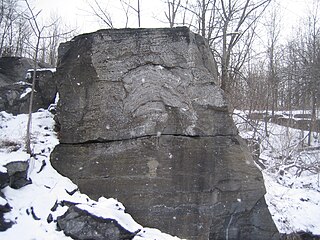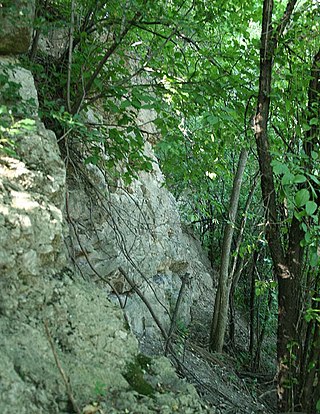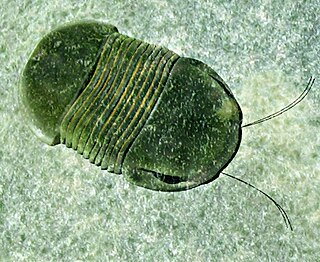Related Research Articles

Charles Doolittle Walcott was an American paleontologist, administrator of the Smithsonian Institution from 1907 to 1927, and director of the United States Geological Survey. He is famous for his discovery in 1909 of well-preserved fossils, including some of the oldest soft-part imprints, in the Burgess Shale of British Columbia, Canada.

John Strong Newberry was an American physician, geologist and paleontologist. He participated as a naturalist and surgeon on three expeditions to explore and survey the western United States. During the Civil War he served in the US Sanitary Commission and was appointed secretary of the western department of the commission. After the war he became professor of geology and paleontology at Columbia University School of Mines and chief geologist of the Geological Survey of Ohio.

Fossil collecting is the collection of fossils for scientific study, hobby, or profit. Fossil collecting, as practiced by amateurs, is the predecessor of modern paleontology and many still collect fossils and study fossils as amateurs. Professionals and amateurs alike collect fossils for their scientific value. A commercial trade in fossils has also long existed, with some of this being practised illegally.

James Hall Jr. was an American geologist and paleontologist. He was a noted authority on stratigraphy and had an influential role in the development of paleontology in the United States.

Ferdinand Vandeveer Hayden was an American geologist noted for his pioneering surveying expeditions of the Rocky Mountains in the late 19th century. He was also a physician who served with the Union Army during the Civil War.

Charles Abiathar White was an American geologist, paleontologist, and writer whose publications total 238 titles.

The Chazy Reef Formation is a mid-Ordovician limestone deposit in northeastern North America.

Fossil Cycad National Monument was a national monument in the U.S. state of South Dakota beginning in 1922. The site contained hundreds of fossils of the cycad-like bennettitalean plant Cycadeoidea, one of the world's greatest concentrations. Because vandals stole or destroyed all of the visible fossils, it was withdrawn as a national monument in 1957. It is located in northwestern Fall River County, on U.S. Route 18, northeast of the city of Edgemont.

Thomas Condon (1822–1907) was an Irish Congregational minister, geologist, and paleontologist who gained recognition for his work in the U.S. state of Oregon.

David Dale Owen was a prominent American geologist who conducted the first geological surveys of Indiana, Kentucky, Arkansas, Wisconsin, Iowa and Minnesota. Owen served as the first state geologist for three states: Kentucky (1854–57), Arkansas (1857–59), and Indiana. His first geological work was as an assistant mapping the geology of Tennessee in 1836. In addition, Owen was appointed as a U.S. geologist in 1839 and led federal surveys of Iowa, Wisconsin, and northern Illinois (1839–40) and in the Upper Midwest (1847-1851). Owen's greatest legacy lies in the eleven volumes of published reports from his state and federal geological surveys, which increased the general knowledge and understanding of American geology, the structural geology and paleontology of the United States, and the mineral wealth of the Midwestern states. Owen's most significant contribution to the field of geology was identifying and naming major geological formations of the Mississippi River Valley and placing them in relative position on a geological timeline. He also helped to standardize the nomenclature of geological structures in the Midwest.

Soldiers' Home Reef, also known as Rocky Point, National Military Asylum Reef, or Veterans' Hill is a fossilized coral reef rock formation in Milwaukee, Wisconsin. The reef formation was discovered by geologist Increase A. Lapham in the 1830s. It and other fossilized coral reefs that he discovered were the first geological reef formations described in North America, and are among the first described in the world. This reef was declared a National Historic Landmark in 1993.

The Dr. Fisk Holbrook Day House, also known as Sunnyhill Home, is a historic house at 8000 West Milwaukee Avenue in Wauwatosa, Wisconsin. Built in 1874, it was the home of Doctor Fisk Holbrook Day (1826-1903), a prominent local physician and amateur geologist. The stylistically eclectic house was built in part to house Day's large collection of artifacts, and is the Milwaukee suburb's only major 19th-century mansion. It was declared a National Historic Landmark in 1997. It is privately owned and not open to the public.

The Thomas A. Greene Memorial Museum, also known as Greene Geological Museum or Greene Museum, is a mineral and fossil museum in Milwaukee, Wisconsin, administered by the Department of Geosciences at the University of Wisconsin–Milwaukee.

Schoonmaker Reef, also known as Wauwatosa Reef, Schoonmaker Quarry, Raphu Station or Francey Reef is a 425 million year-old fossilized reef in Wauwatosa, Wisconsin. It was discovered in 1844 by Increase A. Lapham and Fisk Day on the site of a quarry owned by the Schoonmaker family. Geologist James Hall declared its significance in 1862. It was the first ancient reef described in North America, and among the first described in the world. It is located North of W. State St., between N. 66th St. and N. 64th St. extended, in Wauwatosa. It was declared a National Historic Landmark in 1997.
Holbrook House or Holbrook Farm may refer to:

Thomas Arnold Greene was an American pharmacist and amateur geologist. He is known for his collection of fossils and minerals which were preserved by his family in a museum known as the Thomas A. Greene Memorial Museum.

Charles Emerson Beecher was an American paleontologist most famous for the thorough excavation, preparation and study of trilobite ventral anatomy from specimens collected at Beecher's Trilobite Bed. Beecher was rapidly promoted at Yale Peabody Museum, eventually rising to head that institution.

Bumastus is an extinct genus of corynexochid trilobites which existed from the Early Ordovician period to the Late Silurian period. They were relatively large trilobites, reaching a length of 6 in (15 cm). They were distinctive for their highly globular, smooth-surfaced exoskeleton. They possessed well-developed, large compound eyes and were believed to have dwelled in shallow-water sediments in life.

Paleontology in Wisconsin refers to paleontological research occurring within or conducted by people from the U.S. state of Wisconsin. The state has fossils from the Precambrian, much of the Paleozoic, some a parts of the Mesozoic and the later part of the Cenozoic. Most of the Paleozoic rocks are marine in origin. Because of the thick blanket of Pleistocene glacial sediment that covers the rock strata in most of the state, Wisconsin’s fossil record is relatively sparse. In spite of this, certain Wisconsin paleontological occurrences provide exceptional insights concerning the history and diversity of life on Earth.
Percy Edward Raymond was a Harvard professor and paleontologist who specialized in the evolution of trilobites and studied fossils from the Burgess shales within which a region is named as the Raymond Quarry. He was among the careful explorers of the apparent explosion of life forms in the Cambrian period.
References
- 1 2 3 4 5 6 Joanne Kluessendorf and Donald G. Mikulic (September 25, 1994). "National Historic Landmark Nomination: Day, Dr. Fisk Holbrook, House / Sunnyhill Home" (pdf). National Park Service.
{{cite journal}}: Cite journal requires|journal=(help) and Accompanying 5 photos, exterior and interior, from 1996. (573 KB) - ↑ "Bumastus niagarensis Trilobite". June 2, 2010. Retrieved 2010-06-23.
Bumastus dayi Raymond - Wauwatosa, Wisconsin
- ↑ Vogdes, Anthony Wayne (July 20, 1917). "Palaeozoic Crustacea;The publications and notes on the genera and species during the past twenty years, 1895-1917". Transactions of the San Diego Society of Natural History. San Diego: Press of Frye & Smith. III (1): 80. Retrieved 2010-06-23.
- ↑ "Dr. Fisk Holbrook Day House". National Historic Landmark summary listing. National Park Service. Archived from the original on 2009-04-03. Retrieved 2008-01-02.
- ↑ http://files.usgwarchives.net/mi/ingham/lansing/obituary/drday.txt%5B%5D